Everything you need to know about the Sydney Light Rail
Sydney’s eagerly anticipated new light rail system is opening to the public today. Here is everything you need to know.
The wait is finally over, with Sydney’s eagerly anticipated new light rail system opening today at 11am.
Large crowds are expected when the long-awaited tram service from Circular Quay to Randwick opens to the public.
No fares will be charged during the opening weekend of the $2.9 billion project, which has been plagued by cost blow-outs and significant delays.
The branch line to Kingsford isn’t expected to open until early next year. Additional staff will be on hand throughout the weekend, while traffic controllers and police officers will be on the ground to deal with higher than normal numbers of commuters.
Extra buses will be running from Randwick into the city.
NSW Transport Minister Andrew Constance said it will be an exciting day for Sydney, but warned people to be patient amid large crowds and remain safety conscious while travelling, driving or walking in the city.
Here’s everything you need to know before you dust your Opal card off.
WHEN WILL IT OPEN?
The system will open on today at 11am.
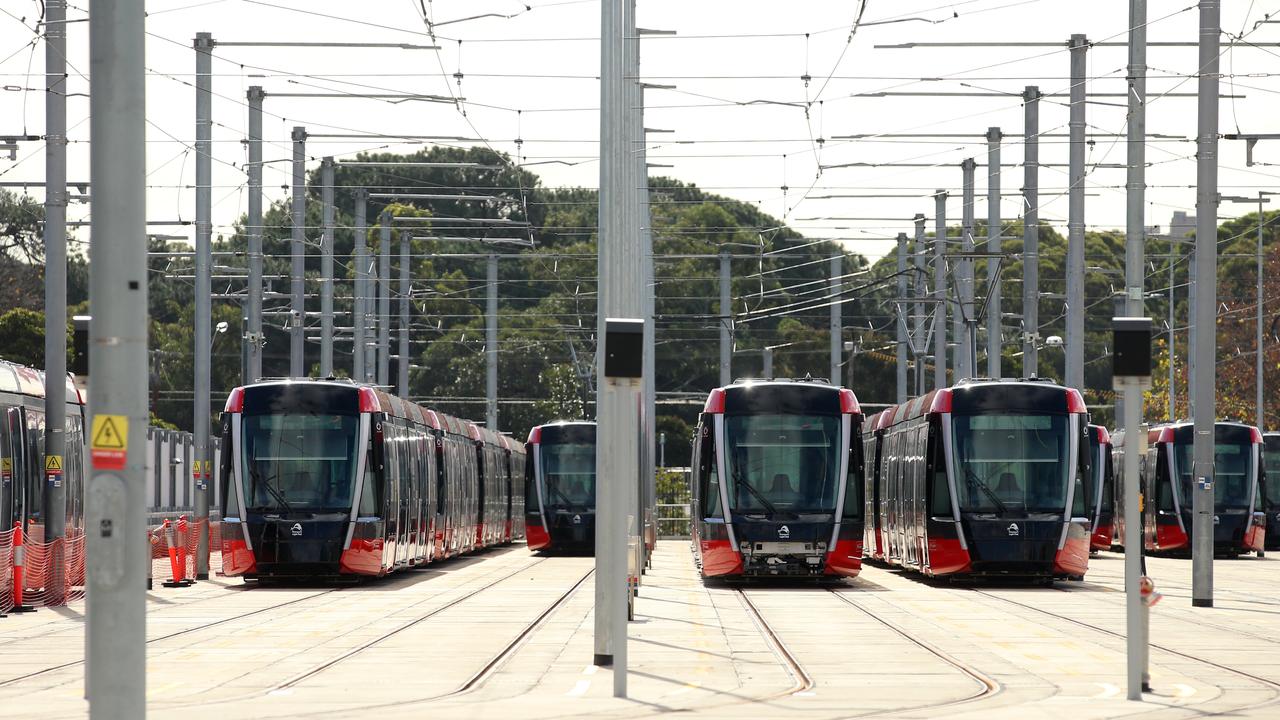
Trams will begin taking passengers from Circular Quay, close to the Opera House, via Wynyard, the Queen Victoria Building, Central Station and the Sydney Cricket Ground to Randwick.
But the branch to Kensington and Kingsford, in the city’s eastern suburbs, won’t open in December, TfNSW has confirmed.
The year-long delay to the light rail system, which involved the Government and builder Acciona heading to court, led to the Randwick branch being prioritised so something could be opened this year.
The Kingsford branch is due to open in March 2020.
WHERE WILL IT STOP?
In total, there are 19 stops on the 13km light rail route. Once the trams hit Moore Park heading south, they branch off to Kingsford or Randwick.
Here is a complete list of the stops and where you can find them:
• Circular Quay (on Alfred Street near Pitt Street)
• Bridge Street (George Street south of Bridge Street)
• Wynyard (George Street between Hunter Street and Angel Place)
• QVB (George Street south of Market Street)
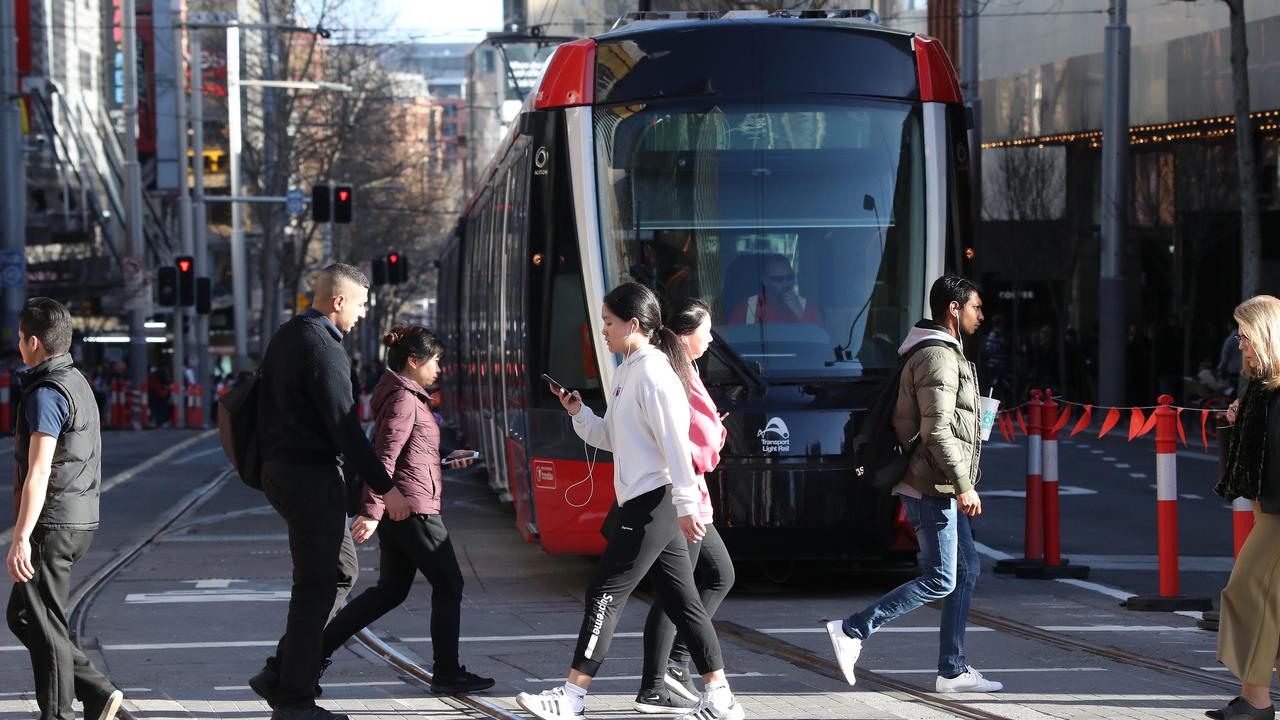
• Town Hall (George Street between Park Street and Bathurst Street)
• Chinatown (George Street near Campbell Street)
• Haymarket (Rawson Place west of Pitt Street)
• Central Chalmers Street (Chalmers Street between Eddy Avenue and Devonshire Street)
• Surry Hills (Devonshire Street at Ward Park, near Riley Street)
• Moore Park (opposite Sydney High north of Cleveland Street/Lang Road)
Randwick branch
• Royal Randwick (north side of Alison Road west of Darley Road)
• Wansey Road (south side of Alison Road near Wansey Road)
• UNSW High Street (corner of High Street and Wansey Road)
• Randwick (High Street west of intersection with Avoca Street)
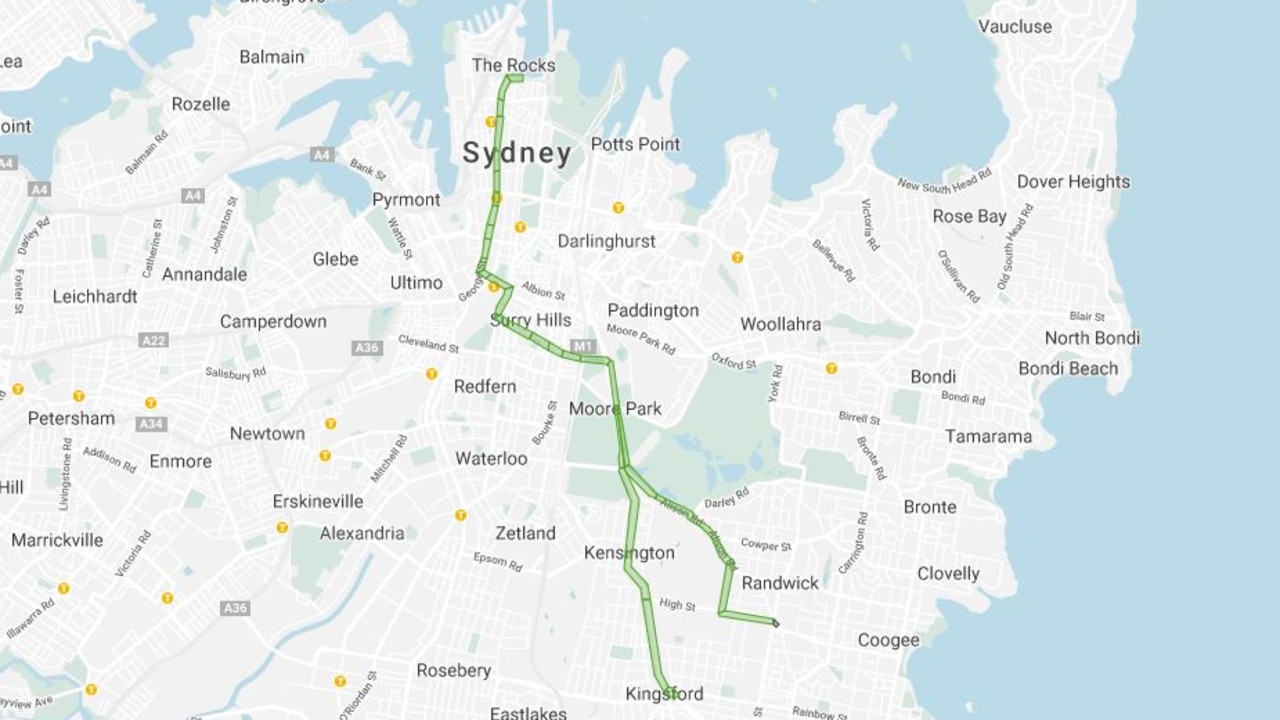
Kingsford branch
• ES Marks (Anzac Parade north of Kensington shops)
• Kensington (Anzac Parade between Todman Avenue and Bowral Street)
• UNSW Anzac Parade (Anzac Parade at University Mall)
• Kingsford (Anzac Parade at Kingsford shops)
• Juniors Kingsford (Anzac Parade south of Nineways intersection)
HOW OFTEN WILL THEY RUN?
The trams will run between 5am and 1am. There will be one every four to eight minutes between Circular Quay and Central and every eight to 10 minutes between Central and Randwick from 7am to 7pm every day of the week.
WHAT ARE THE FARES?
For adult Opal card holders, a one-way journey from Randwick to Circular Quay costs $3.73 and a one-way journey from Kingsford to Circular Quay costs $3.73.
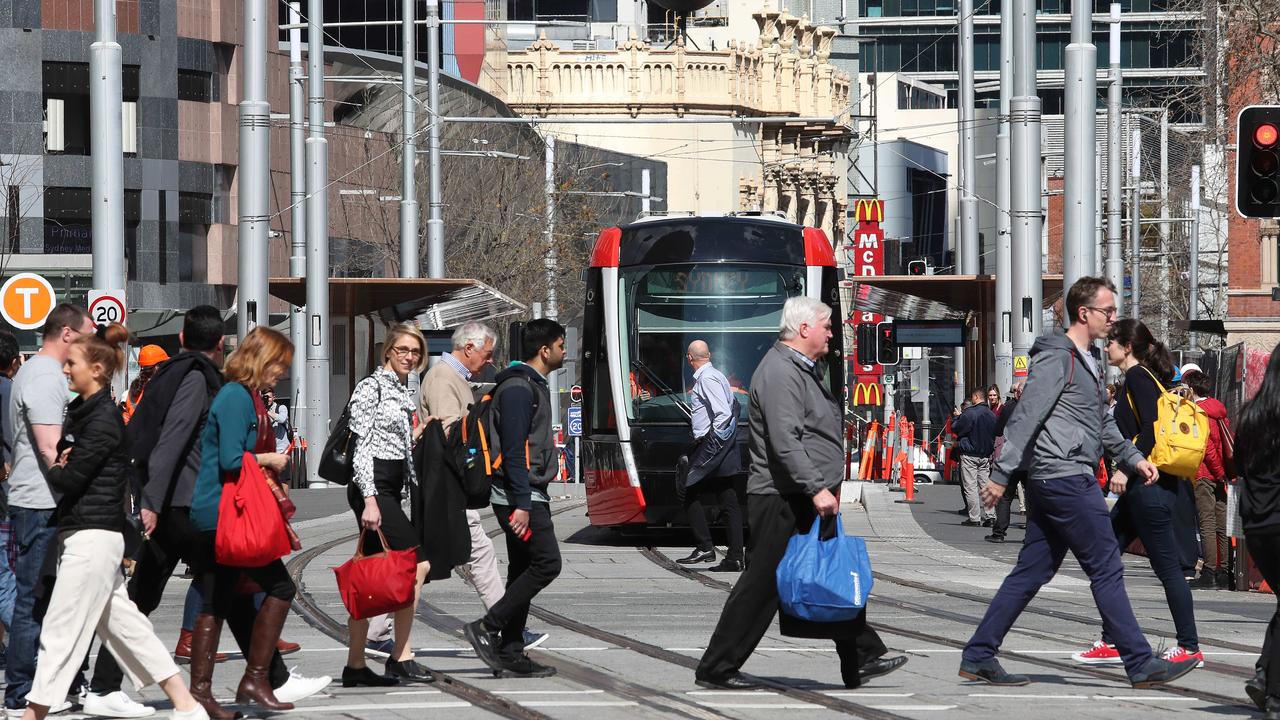
Adult Opal card holders and contactless card users get a $2 discount for every transfer between metro/train, ferry, bus or light rail as part of one journey within 60 minutes from the last tap off.
HOW BUSY IS IT GOING TO BE?
The 33-metre carriages will be coupled together to form 67-metre trams that can fit up to 450 passengers — that’s roughly what nine buses can hold.
This means the new network will have the initial capacity to move up to 13,500 commuters per hour (6750 in each direction) during peak times.
It’s understood the trams will be very busy from the get-go.
“We expect that the first day of services will be very popular with the community,” a Transport for NSW spokeswoman said. “We will have plenty of extra staff on the ground on day one to help customers find their way and answer questions.”
HOW FAST WILL THEY GO AND WHAT ARE THE JOURNEY TIMES LIKE?
The trams can reach speeds of up to 60km/h, but drivers will drive to the conditions, which will vary depending on different sections of the route at different times of the day.
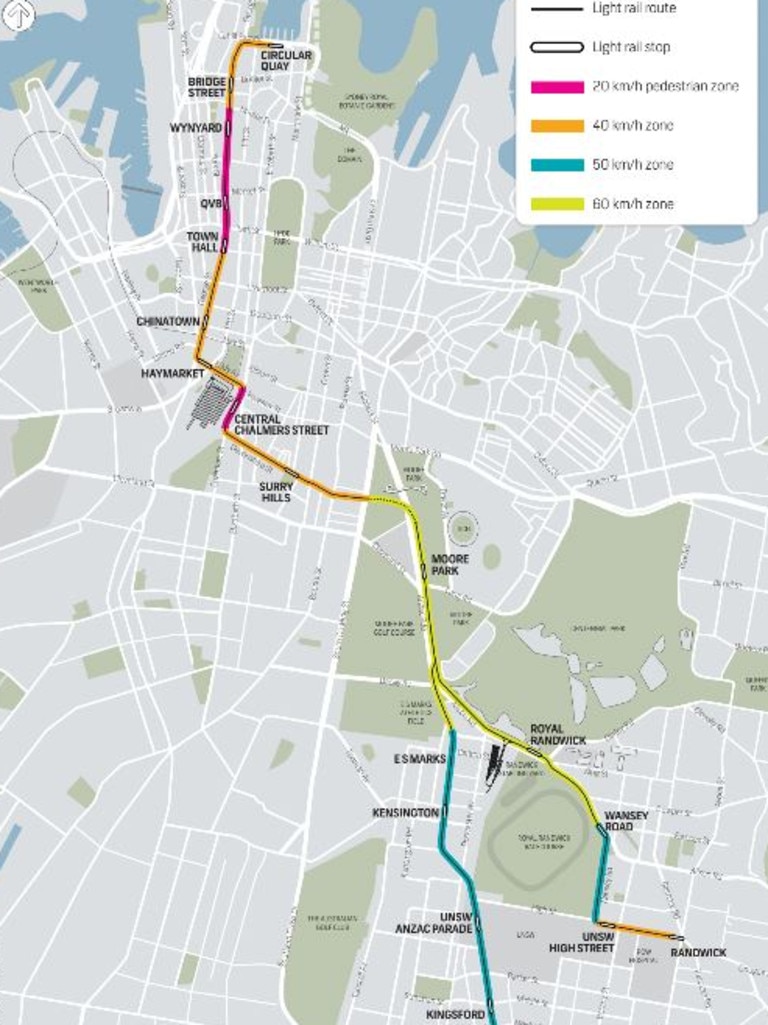
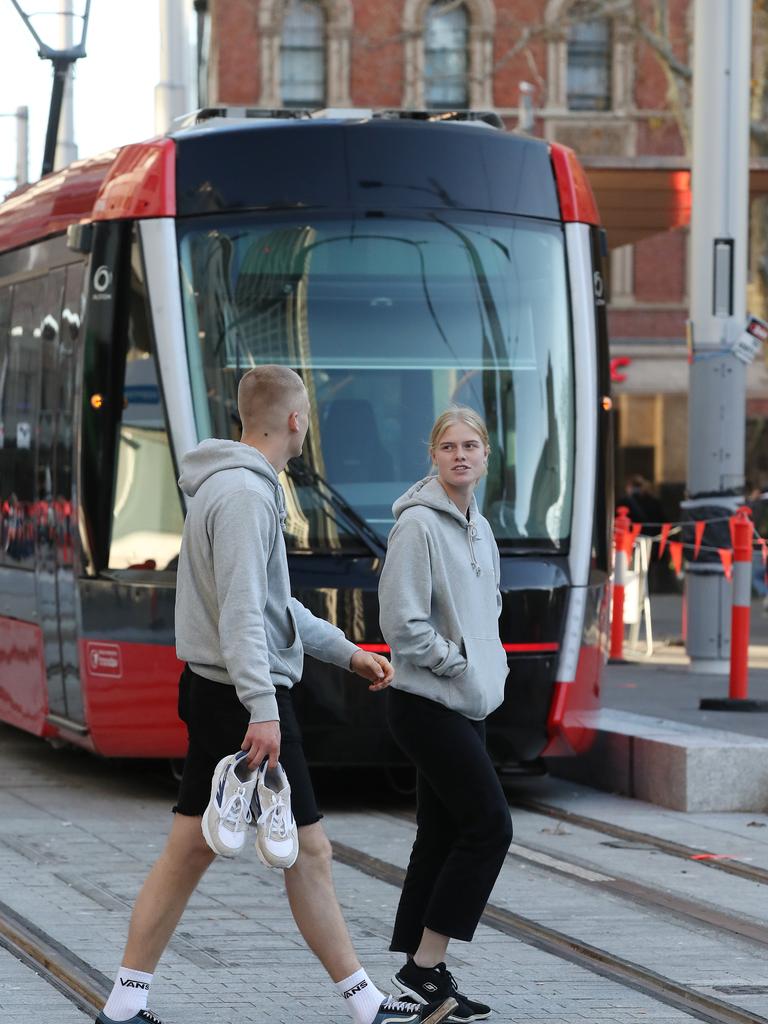
As for journey times, Transport for NSW says they’re not known just yet.
“We are currently testing trams against preliminary traffic modelling and working on tweaking priority at intersections to finalise journey times in line with changes being made during testing,” a spokeswoman said. “It’s important that we balance the needs of the light rail with other road users.”
She added that it would take time to achieve optimal travel times.
HOW MUCH DID IT COST TO BUILD?
After a major dispute between the NSW Government and its Spanish construction contractor — which resulted in a $576 million settlement — the total cost of the light rail will be at least $2.7 billion.
It was originally budgeted to cost $1.6 billion, but in 2014, the cost surged to $2.1 billion because of incorrect pricing and omissions in the business case.
Transport for NSW says the true cost will be known after the project’s completion and a final completion review is carried out by Infrastructure NSW.
— with Benedict Brook




